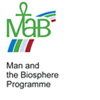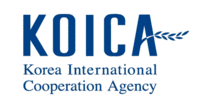Green Economy in Biosphere Reserves project in Ghana, Nigeria and Tanzania

A stakeholder validation workshop on baseline studies in the Bia Biosphere Reserve.
The Green Economy in Biosphere Reserves project (GEBR) is a three year project being implemented in three sub-Saharan African countries; Ghana, Nigeria, and Tanzania. The project is being financed by Korea International Cooperation Agency (KOICA) through a funds-in-trust agreement, and is being implemented by UNESCO within the framework of the Man and the Biosphere Programme (MAB).
Green Economy
The GEBR project has recently completed the implementation phase and is currently in its second year of practice. Its three main aims are: the conservation of biodiversity, poverty reduction, and sustainable development through green economies. A green economy is one low in carbon, resource efficient and above all, socially inclusive. It covers a range of sectors, from renewable energy to sustainable transport and organic farming.
Biodiversity and its sub-Saharan Africa specificities
Biosphere reserves can be model regions for a green economy as they are ‘open-air labs’ for innovative approaches to sustainable development. Their sustainable use of natural resources, by and for the benefit of humankind, is integral to this concept. The GEBR project strives to ensure long-term conservation of biodiversity in three biosphere reserves in Africa, all internationally recognized for their values in genetic resources and representative ecosystems. These biosphere reserves have similar ecosystem types with tropical humid forests in the Bia (Ghana) and Omo (Nigeria), and tropical submontane and evergreen forests in the East Usambara (Tanzania). With people living within, or in close proximity to the three sites, GEBR seeks to integrate their developmental needs and conservation objectives in line with MAB principles.
Reasons for biodiversity endangerment
Sub-Saharan Africa’s biodiversity is endangered by a plethora of components. These include: a lack of sustainable financing regarding biosphere reserves, climate change, the unemployed youth population, a lack of infrastructure, the poor rural population dependent on natural resources, and conflicts/post conflict situations.
How to fix the problem
There are three main solutions: conserving biodiversity by reducing pressure on the forest due to the extraction of non-timber forest products (NTFPs) and fuel wood, poverty reduction by diversifying the economy through improved and alternative biodiversity related livelihoods, and sustainable development by building the capacity of the communities in a holistic manner to ensure sustainable biodiversity businesses and conserve the resource base of said businesses.
Project background
The immense challenge regarding poverty alleviation in sub-Saharan Africa is due to the slow economic growth found in most countries. Additional difficulties stem from contributing environmental factors (droughts and floods) resulting in famine, malnourishment and the destruction of natural economic assets. GEBR targets the immediate adverse effects of local reliance on biodiversity, and identifies other knock on issues such as accumulative pressure on ecosystems due to population growth, and negative social implications from restricted human activities in protected areas.
Back to top


